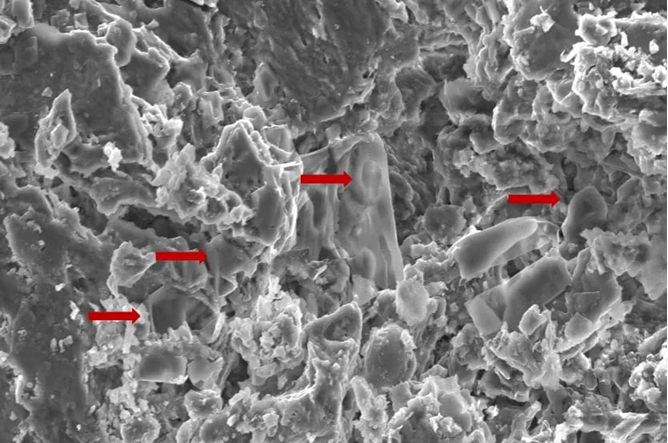A dinosaur that lived not long before the asteroid ended its kind had a tumor that paleontologists have been studying for seven years. Now, some of those working on the specimen have used advanced microscopy to provide new insights into the disease that plagued the 4-meter (13 feet) long hadrosaur, and think the findings might be relevant today.
Even your dinosaur-obsessed cousin may not know about Telmatosaurus transsylvanicus – it’s not likely to feature prominently in many exhibitions or films. Still, one T. transsylvanicus gave the marsh-living species a moment of fame in an unfortunate way when it was found to have a facial tumor. This wasn’t the first evidence of cancer in dinosaurs, although we currently don’t have many examples, but it was the first time such an ancient tumor had been found to include soft tissues.
The discovery was a refutation to those who consider cancers a purely modern condition, but that’s such a fringe position that it didn’t affect oncology research. However, a team led by Professor Justin Stebbing of Anglia Ruskin University thinks there are lessons we can learn, provided we pay more attention to whether soft tissues have survived when collecting dinosaur fossils.
Stebbing and co-authors gained access to the T. transsylvanicus fossil and applied scanning electron microscopy to a tiny sample. They were rewarded with images of blood cells, including proteins, which are far more enduring than DNA. The study of preserved proteins is common enough to have earned the name paleoproteomics, but usually involves much younger examples, for example, from the last Ice Age.

Suspected fossilised erythrocyte-like structures in a tumor from Telmatosaurus transsylvanicus, a late Cretaceous hadrosaur.
Image Credit: Chandrasinghe et al., 2025 Biology
The team hopes their work will allow them to identify how dinosaurs fought cancer, just as other scientists look to relatively cancer-resistant living species, such as elephants and bowhead whales, for potential approaches we can use.
“Dinosaurs, as long-lived, large-bodied organisms, present a compelling case for investigating how species managed cancer susceptibility and resistance over millions of years,” Stebbing said in a statement.
“Proteins, particularly those found in calcified tissues like bone, are more stable than DNA and are less susceptible to degradation and contamination. This makes them ideal candidates for studying ancient diseases, including cancer, in paleontological specimens. Unlike skeletal structures alone, soft tissues contain proteins that provide molecular information that can reveal the underlying biological mechanisms of disease,” Stebbing said, adding a plea to prioritize preserving these tissues, which the authors argue may be more common than generally recognized, when they are found.
Dinosaurs must have had immune systems that resisted cancers to have lived as long as they did, and found ways to tackle the oxidative stress cancer causes. The team hopes that proteins from the T. transsylvanicus and any similar fossils we can find will reveal the proteins involved. They note that the signs of cancer we have detected are disproportionately common in hadrosaurs, which may make their fossils prime targets.
Whether such ancient remains are a distraction from living species which, while seldom as large, are certainly easier to study, remains to be seen. However, life-changing (and life-saving) breakthroughs have often come from curiosity-driven basic research appearing to lack practical applications, so the idea is not as improbable as it may seem.
The study is published in Biology.
Source Link: Could Studying Dinosaurs’ Cancer Help Us Cure Our Own?